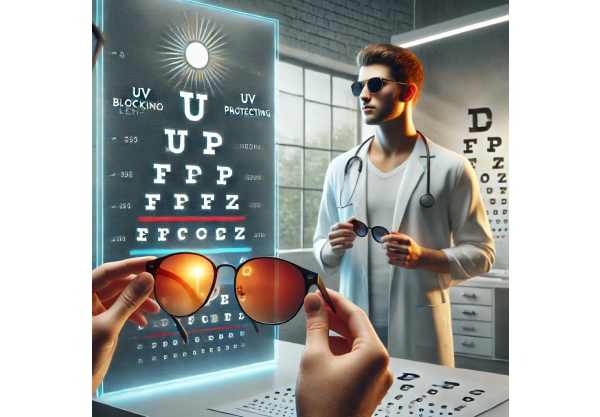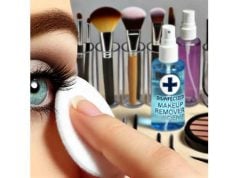
Understanding the Importance of Sunglasses for Eye Protection
When stepping out into the sunlight, it’s easy to focus on the warmth and brightness that greet you. Yet, the sun’s rays can also pose a significant risk to your eyes, far beyond mere discomfort from glare. Ultraviolet (UV) radiation from the sun can lead to serious eye conditions, including cataracts, macular degeneration, and even cancer of the eyelids. Sunglasses are not just a fashion statement; they are essential tools for protecting your eyes from these harmful effects. Choosing the right pair goes beyond selecting a trendy frame—it’s about safeguarding your vision for the long term. Understanding what to look for in sunglasses ensures you’re making a choice that benefits both your style and your eye health.
Key Factors to Consider When Choosing Sunglasses
Selecting the right sunglasses involves more than just picking a pair that complements your face shape. Here’s a detailed look at the key factors to consider:
1. UV Protection: The Non-Negotiable Feature
The most crucial feature of any pair of sunglasses is their ability to block out UV rays. Ultraviolet radiation, which is invisible to the naked eye, can cause both short-term and long-term eye damage. Short-term exposure can result in photokeratitis, a painful condition similar to a sunburn on the surface of the eye. Long-term exposure, however, is even more concerning, as it significantly increases the risk of cataracts and macular degeneration, which can lead to vision loss.
When shopping for sunglasses, ensure they offer 100% UV protection, often labeled as “UV400.” This level of protection blocks out both UVA and UVB rays. It’s important to note that the darkness of the lens doesn’t correlate with UV protection. Even light-colored lenses can provide full UV defense, so always check the label rather than relying on appearance alone.
2. Lens Material: Durability and Clarity
The material of the lenses plays a vital role in both the durability of your sunglasses and the clarity of your vision. The most common materials used are:
- Glass: Offers excellent clarity and scratch resistance but is heavier and more prone to shattering if dropped.
- Polycarbonate: A popular choice for sports and outdoor activities due to its high impact resistance and lightweight nature. However, it is more prone to scratching.
- Acrylic: A cost-effective option, but it may lack the clarity and durability of other materials.
- CR-39: A plastic polymer that balances clarity, weight, and cost, making it a common choice for general use.
When choosing the lens material, consider your lifestyle and activities. For example, if you’re frequently involved in sports or outdoor adventures, polycarbonate lenses might be the best choice due to their resilience.
3. Lens Color and Tint: More Than Just Aesthetic
While lens color might seem like a purely aesthetic choice, it actually impacts how you perceive colors and contrasts in different lighting conditions. Here’s a breakdown of what different tints offer:
- Gray: Reduces overall brightness while preserving natural color balance, making it ideal for everyday use.
- Brown/Amber: Enhances contrast and depth perception, making it suitable for activities like driving or fishing.
- Green: Reduces glare while enhancing contrast, making it a good all-purpose option.
- Yellow/Gold: Great for low-light conditions as they enhance contrast, though they can distort color perception.
- Blue/Purple: Primarily for fashion, but can reduce glare in moderate light conditions.
Consider where and when you’ll be using your sunglasses. If you spend a lot of time in bright environments, darker lenses like gray or green might be preferable. For low-light conditions, such as dusk or fog, yellow lenses could provide the enhanced contrast needed.
4. Polarization: Cutting Through the Glare
Polarized lenses are a fantastic option for reducing glare, especially from reflective surfaces like water, snow, or glass. This feature is particularly beneficial if you drive frequently or engage in activities like boating or skiing. Polarization works by filtering out horizontal light waves, which are the primary source of glare.
However, polarization isn’t necessary for every situation. For instance, pilots or those viewing digital screens frequently may find polarized lenses problematic, as they can interfere with visibility. Assess whether glare is a regular issue for you when deciding if polarization is worth the investment.
5. Frame Design: Comfort Meets Style
The right frame isn’t just about aesthetics—it’s also about comfort and functionality. Frames should fit securely but comfortably on your face, without pinching your temples or nose. When trying on sunglasses, look for the following features:
- Nose Pads: Adjustable nose pads can enhance comfort, especially for those with smaller or more prominent nose bridges.
- Temple Arms: These should wrap gently around your ears without digging in. Spring hinges can provide a more adaptable fit.
- Frame Material: Common materials include metal, which is durable and adjustable, and plastic, which is lightweight and more affordable. Titanium frames are a high-end option that combines durability with a feather-light feel.
Your face shape also plays a role in how sunglasses fit. For example, round faces often look best with angular frames, while square faces can benefit from rounded or oval designs. But beyond appearance, ensure the frames feel good on your face and stay in place during movement.
6. Special Coatings: Enhancing Performance
Some sunglasses come with additional coatings that can further enhance your eye protection and comfort:
- Anti-Reflective Coating: Reduces reflections off the back of the lenses, cutting down on eye strain, particularly in bright conditions.
- Mirror Coating: Reflects more light away, which is helpful in very bright environments. It also adds an extra layer of privacy by obscuring your eyes.
- Scratch-Resistant Coating: Extends the life of your sunglasses by protecting the lenses from minor scratches and dings.
- Hydrophobic Coating: Repels water and sweat, making these lenses ideal for humid or wet conditions.
Consider these coatings based on your specific needs and environment. For example, if you’re frequently outdoors in bright sunlight, a mirror coating combined with UV protection could be beneficial.
7. Prescription Sunglasses: Seeing Clearly
If you wear prescription glasses, don’t compromise your vision when stepping into the sun. Prescription sunglasses are available in a variety of styles and tints, offering the same level of UV protection and customization as non-prescription pairs. You can even opt for polarized lenses or special coatings, ensuring you have the best of both worlds—clear vision and optimal eye protection.
For those who switch between indoor and outdoor environments frequently, photochromic lenses, which adjust tint based on light exposure, might be a convenient option. These lenses darken in bright sunlight and lighten in low-light conditions, providing versatile protection without the need for multiple pairs of glasses.
Making the Right Choice for Your Eyes
Choosing the right sunglasses is a personal decision that depends on various factors, including your lifestyle, environment, and individual preferences. Prioritizing UV protection is non-negotiable, but beyond that, selecting the right lens material, tint, and frame design will enhance both the functionality and comfort of your sunglasses. Whether you need a pair for daily wear, sports, or driving, understanding these key elements ensures your sunglasses will provide the protection and performance your eyes deserve. Remember, the best sunglasses are those that you’ll wear consistently, making them an essential part of your daily routine for eye health.










